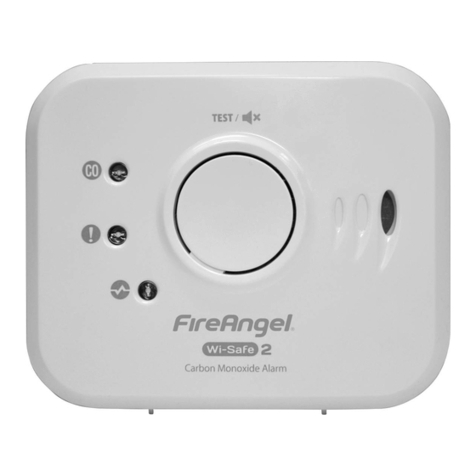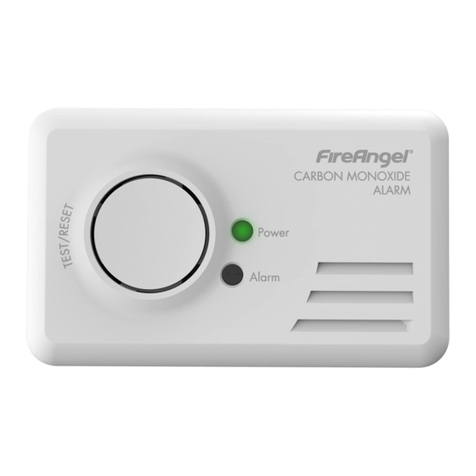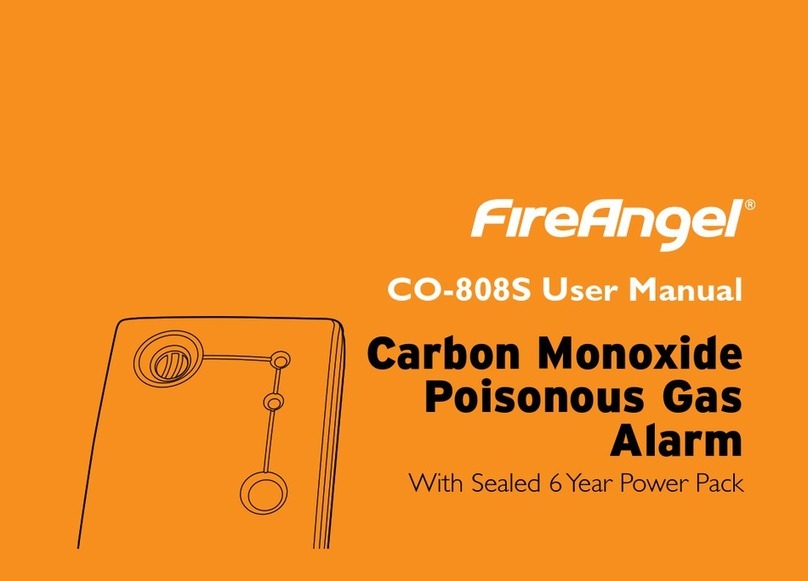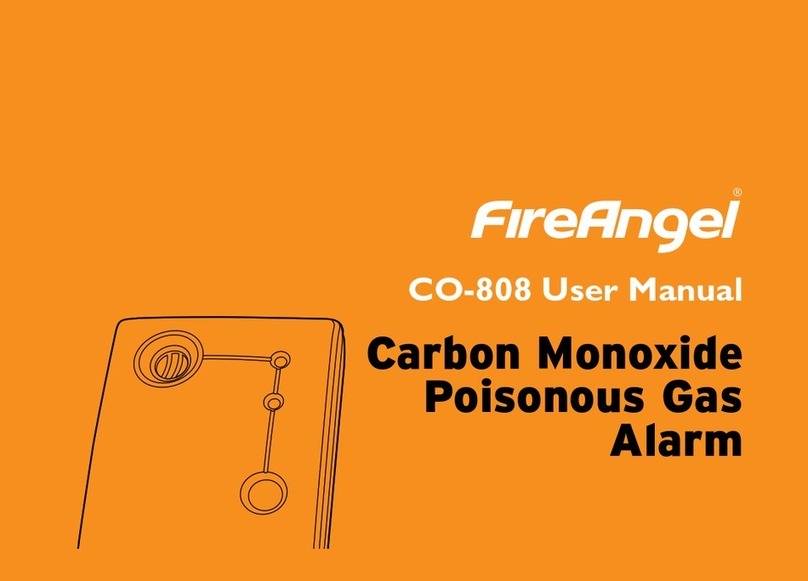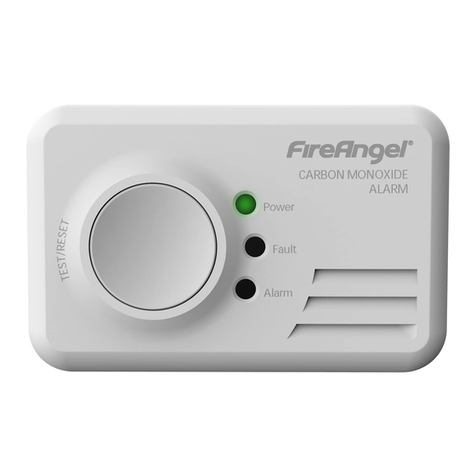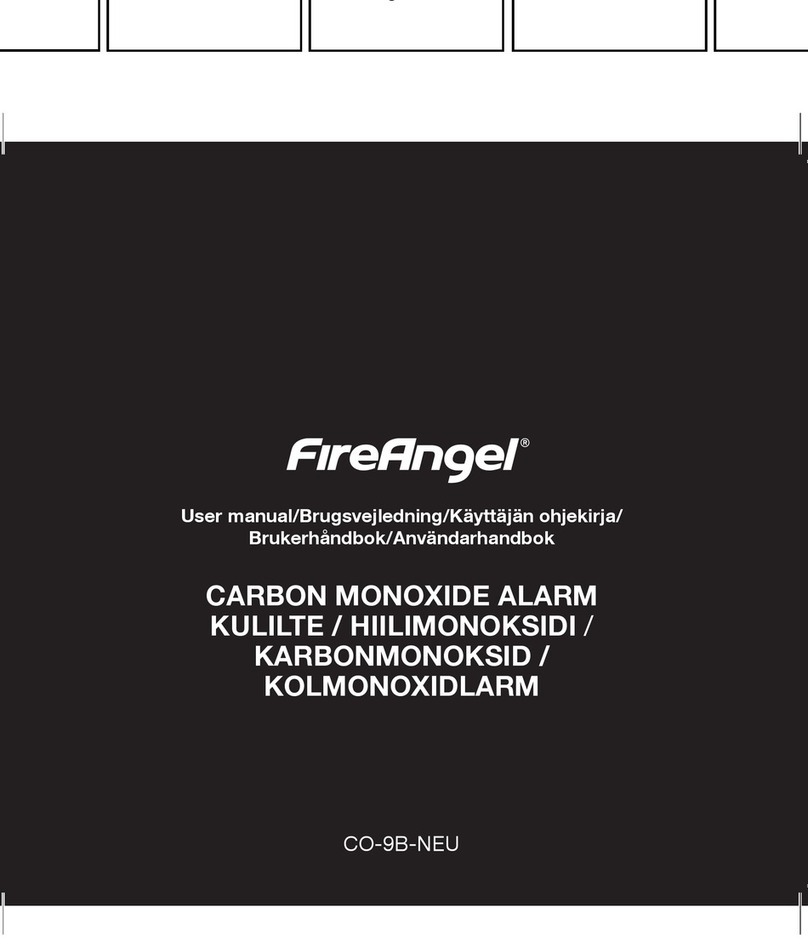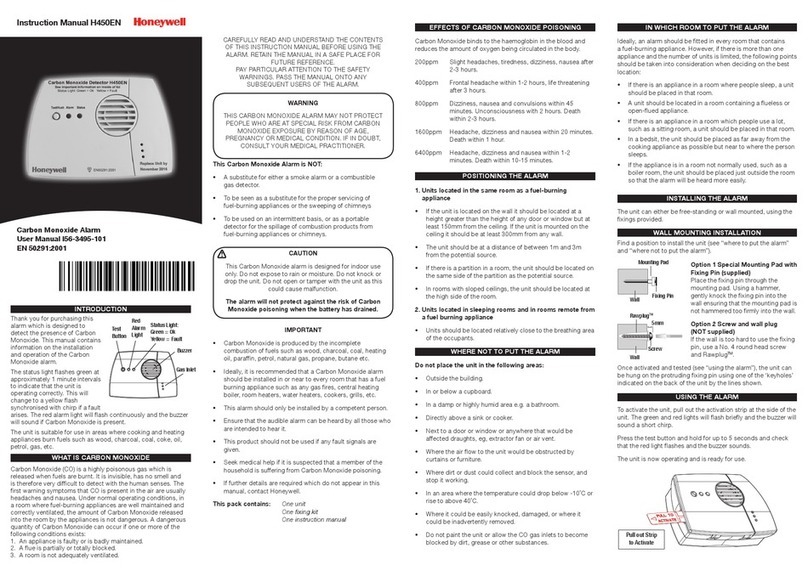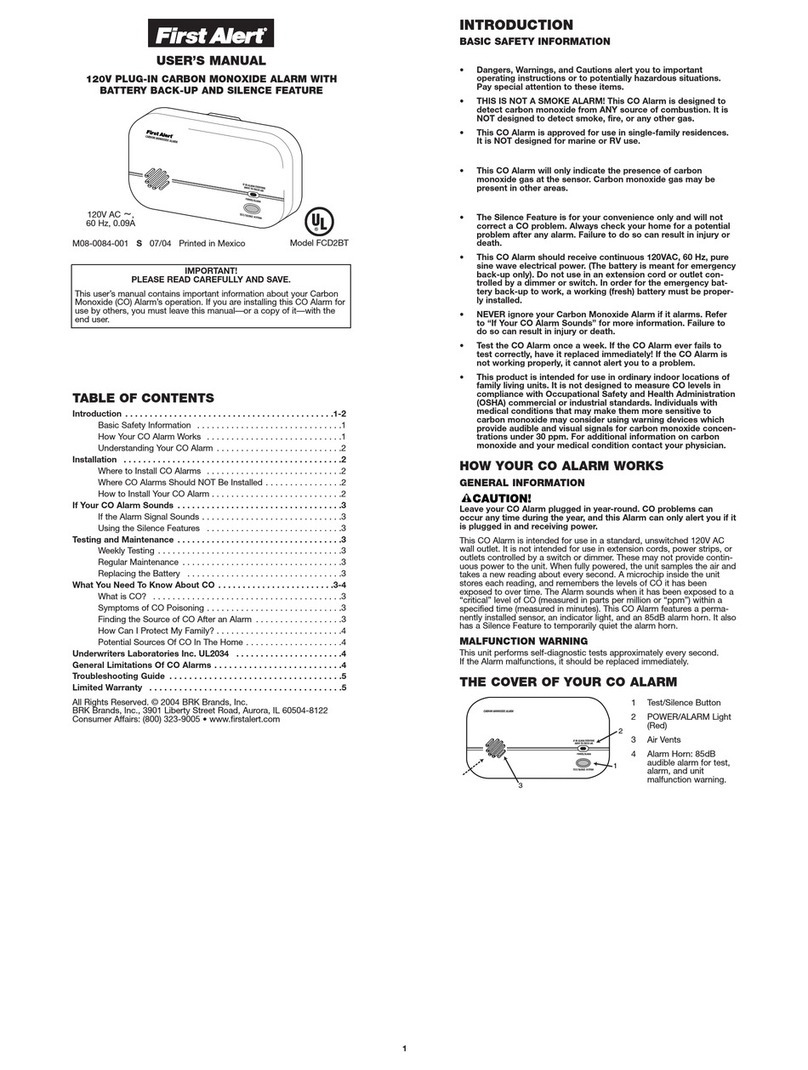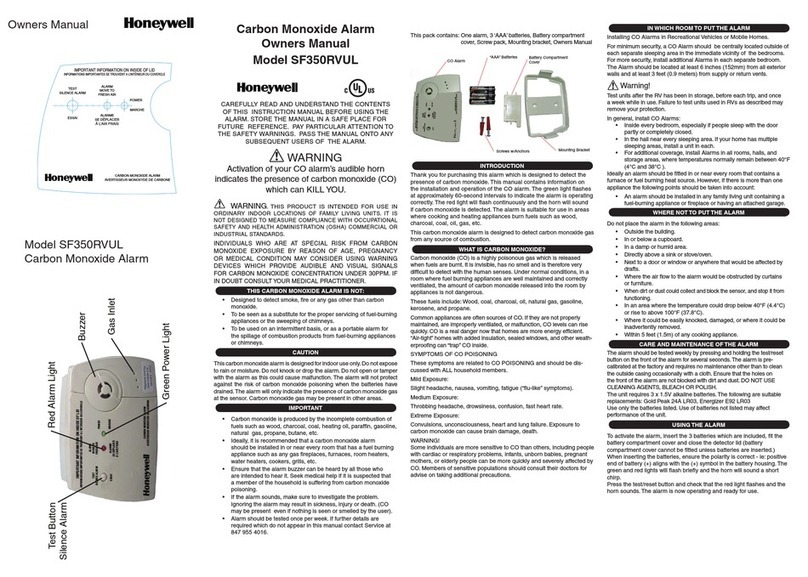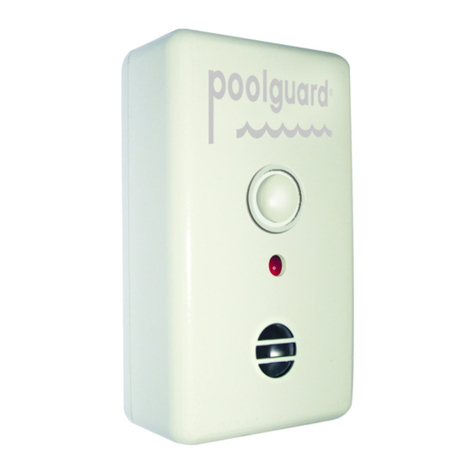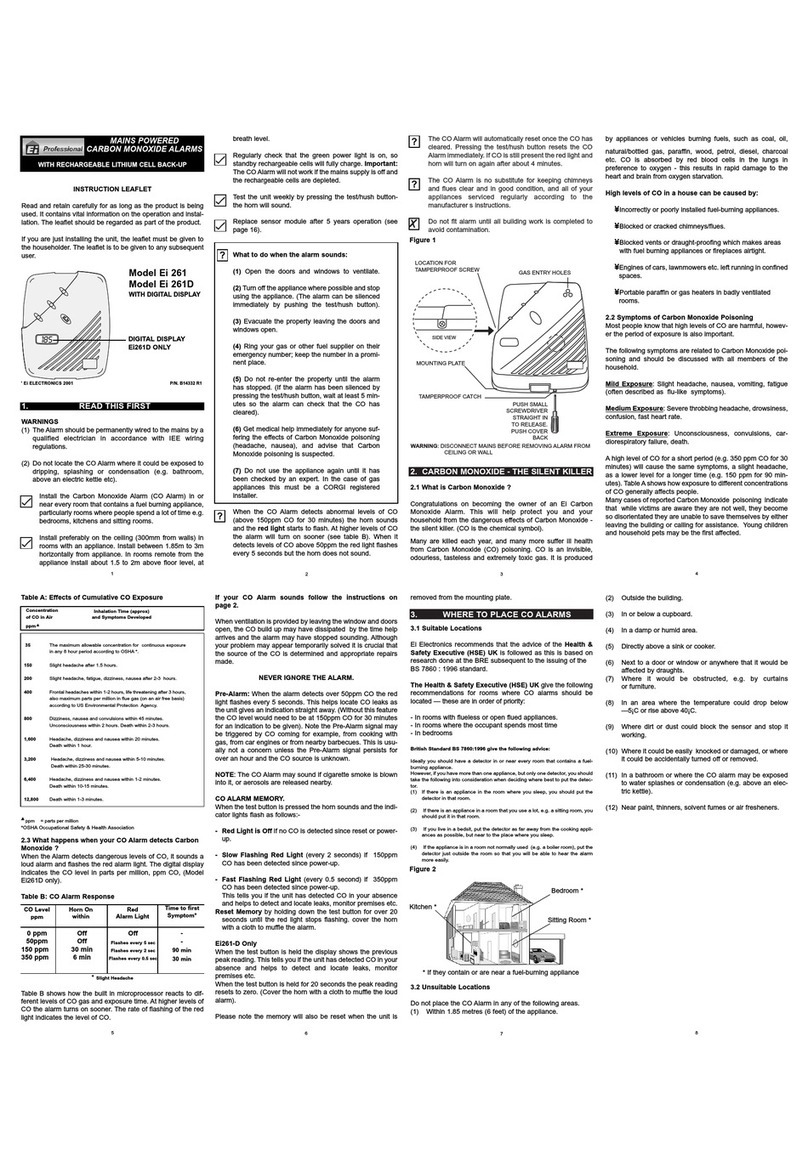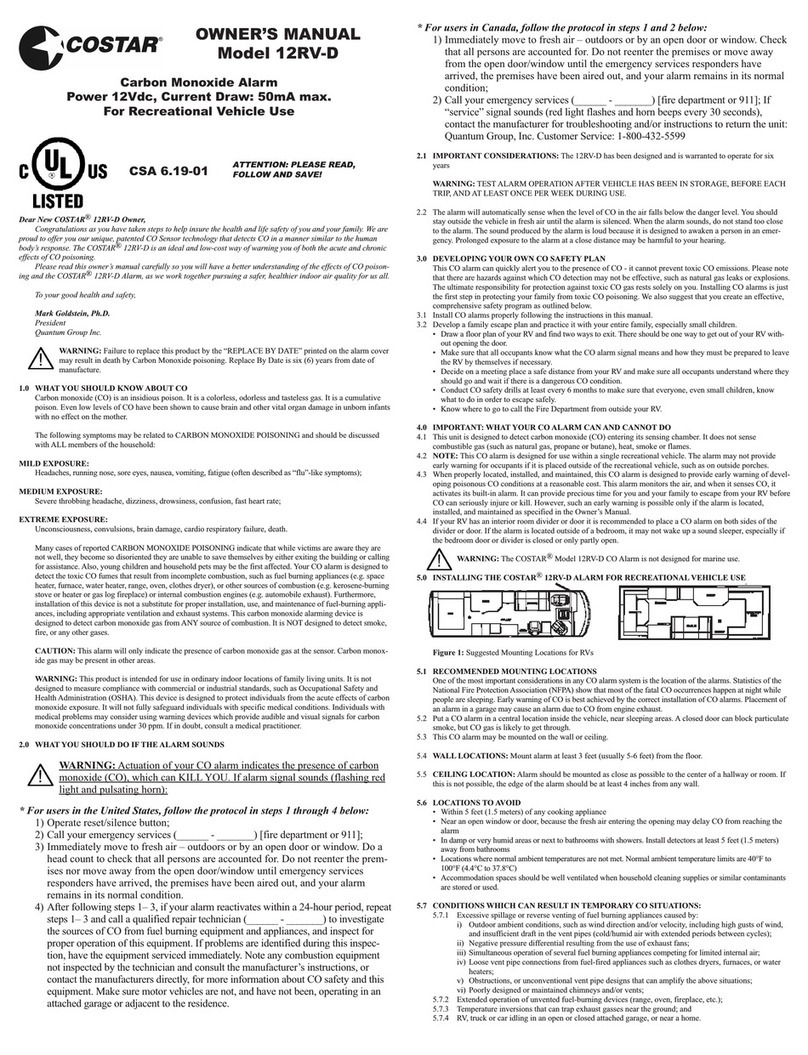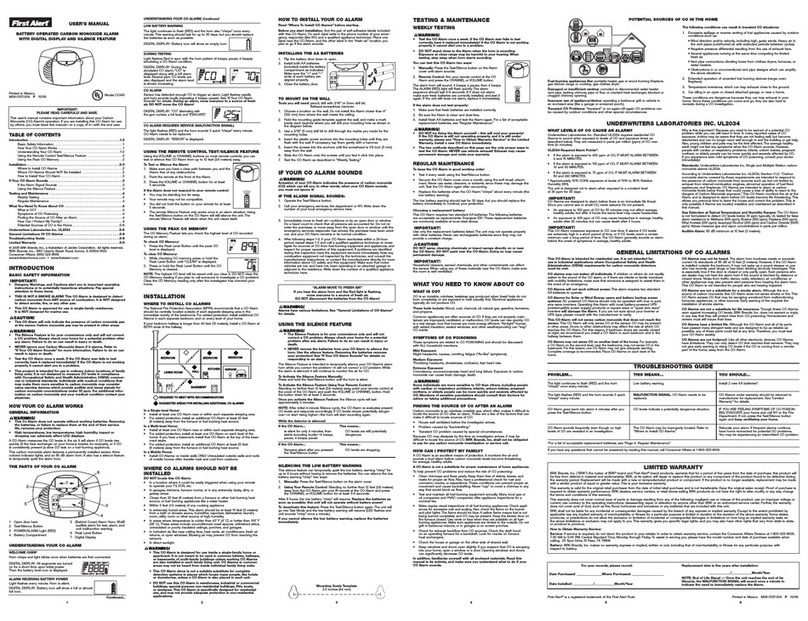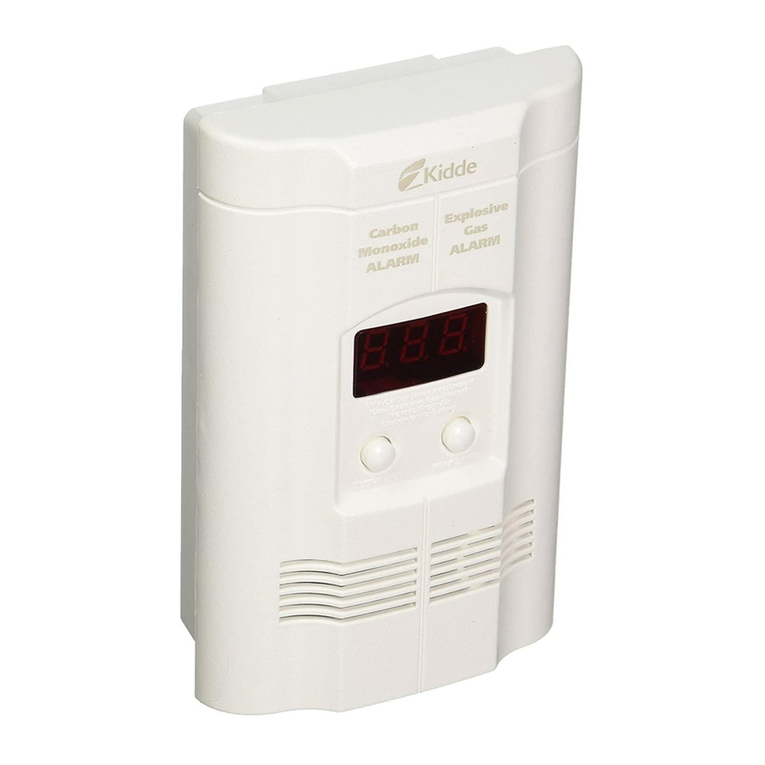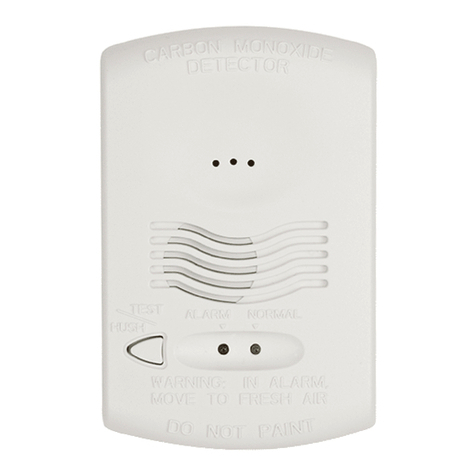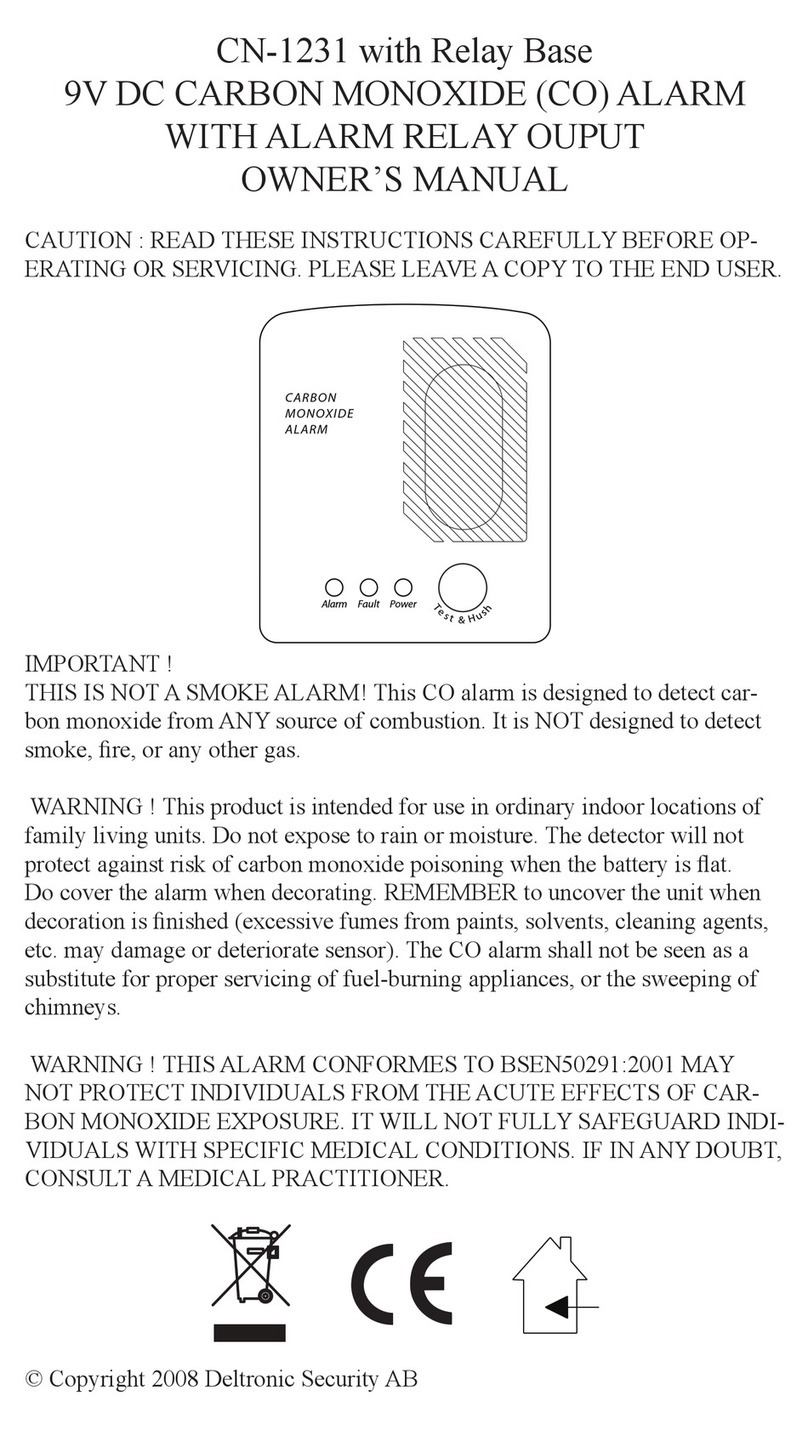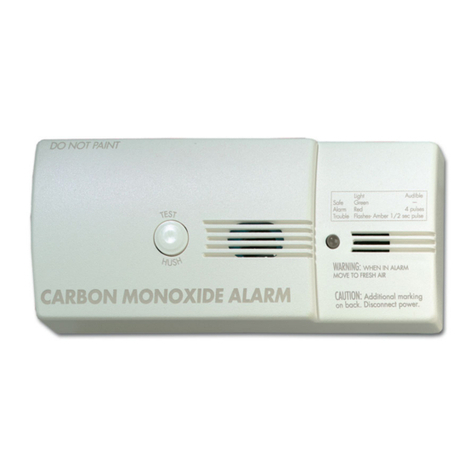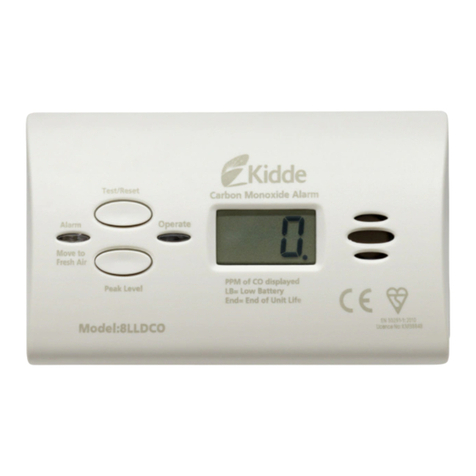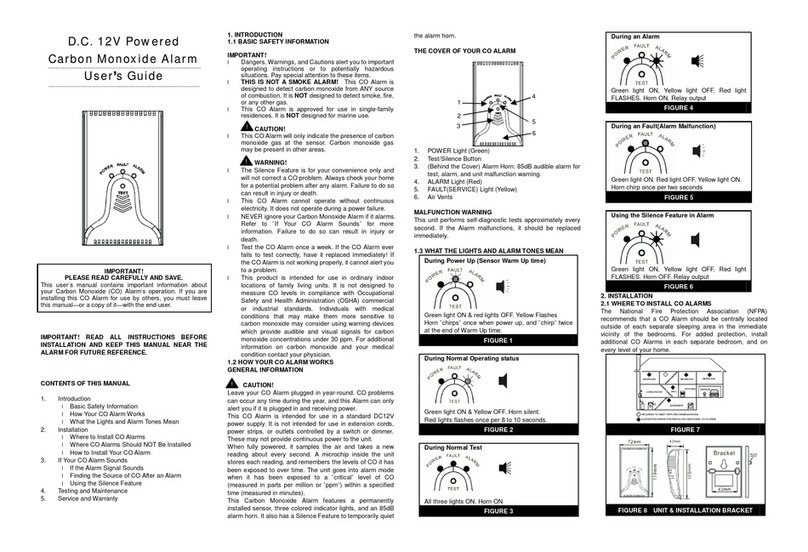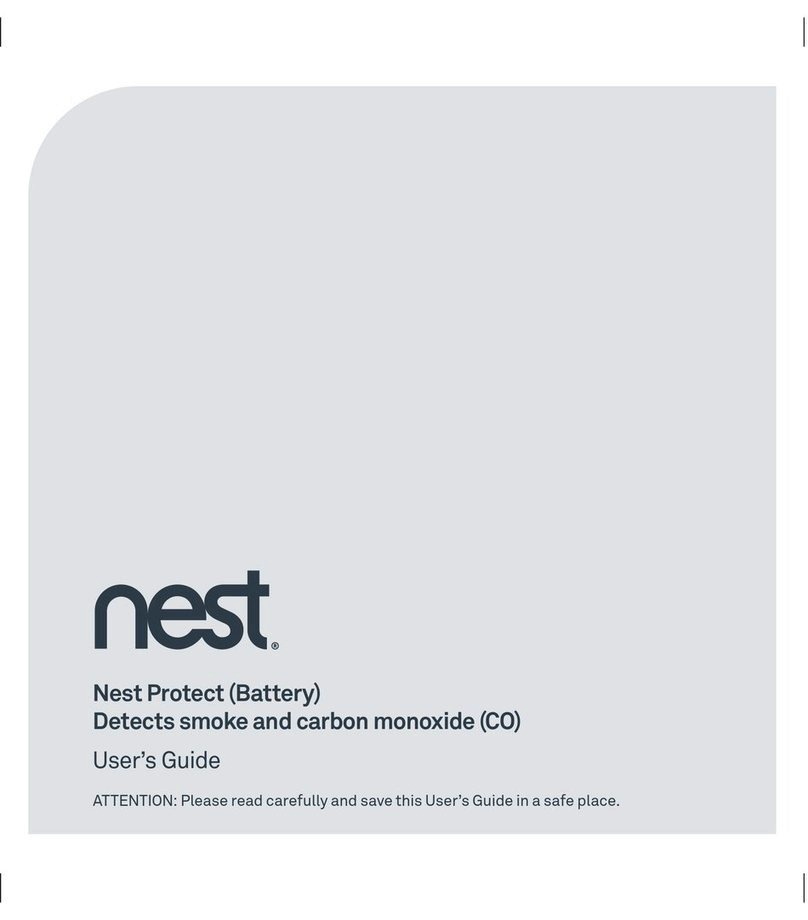
9
• Get medical help immediately for anyone
suffering the effects of carbon monoxide
poisoning (headache, nausea), and
advise that carbon monoxide poisoning is
suspected.
• Do not use the appliances again until they
have been checked by an expert. In the
case of gas appliances the engineer must
be registered on the Gas Safe register.
WARNING: Alarms conforming to this standard
may not protect people who are at special risk
from carbon monoxide exposure by reason
of age, pregnancy or medical condition. If in
doubt, consult your doctor.
CARBON MONOXIDE:
HOW IT CAN AFFECT YOU
AND YOUR FAMILY
Carbon monoxide is a dangerous, poisonous
gas that kills and injures hundreds of people
each year. It is often referred to as the silent
killer because it has no odour or taste and
cannot be seen. Like oxygen, CO enters the
body through the lungs during the normal
breathing process. It competes with oxygen
by replacing it in the red blood cells, thereby
reducing the ow of oxygen to the heart, brain
and other vital organs. In high concentrations,
CO can kill in minutes.
Many cases of reported carbon monoxide
poisoning indicate that while victims are
aware they are not feeling well, they become
disorientated and unable to save themselves
by either exiting the building or calling for
assistance. Exposure during sleep is particularly
dangerous because the victim may not wake up.
SYMPTOMS OF CARBON MONOXIDE (CO)
POISONING:
• Mild Exposure: Slight headache, nausea,
vomiting, fatigue (often described as ‘u-
like’ symptoms).
• Medium Exposure: Severe throbbing
headache, drowsiness, confusion, fast
heart rate.
• Extreme Exposure: Unconsciousness,
convulsions, cardiorespiratory failure,
death.
Your CO alarm monitors the level of CO as
parts per million (ppm) in the atmosphere
surrounding the alarm:
• 35 ppm - The maximum allowable
concentration for continuous exposure
for healthy adults in any 8 hour period, as
recommended by the Occupational Safety
and Health Administration (OSHA).
• 200ppm - Slight headache, fatigue,
dizziness, nausea after 2 - 3 hours.

